How many kinds of measles are there. Understanding Measles: Types, Symptoms, Causes, and Risk Factors
What are the different types of measles. How can you recognize measles symptoms. What causes measles and who is at risk. How is measles diagnosed and treated. What are potential complications of measles. How effective is the measles vaccine. Why is measles still a concern globally.
Types of Measles: Distinguishing Between Standard and German Measles
Measles is a highly contagious viral illness that primarily affects children but can occur at any age. There are two distinct types of measles, each caused by a different virus:
- Standard measles (also known as red measles or hard measles): Caused by the rubeola virus
- German measles (also known as rubella): Caused by the rubella virus
While both types share some similar symptoms, German measles is generally a milder infection compared to standard measles. It’s crucial to understand the differences between these two types to ensure proper diagnosis and treatment.
Recognizing Measles Symptoms: From Early Signs to Characteristic Rash
Measles symptoms typically appear 7-14 days after exposure to the virus. The disease progresses through several stages, with early symptoms resembling those of a common cold or flu. As the infection advances, more distinctive signs emerge.

Early Symptoms of Measles
Initial symptoms of measles include:
- Runny nose and sneezing
- Coughing
- High fever
- Sore, red eyes
- Sensitivity to light
- Grey-white spots inside the cheeks, mouth, and throat (known as Koplik’s spots)
- Nausea
- Fatigue
- Loss of appetite
- Body aches and pains
The Measles Rash
A distinctive rash appears approximately 3-4 days after the onset of initial symptoms. This rash is a key identifier of measles and has several characteristics:
- Red-brown spots that may be flat or slightly raised
- Spots often join together to form blotches
- The rash typically starts on the head and neck, gradually spreading downwards
- Initially, the rash may turn pale when pressed but becomes non-blanching (stays red when pressed) as it progresses
- Mild itching may accompany the rash
The rash usually takes 2-3 days to cover the body and another few days to fade, following the same pattern in which it appeared. Patients often feel most unwell during the first or second day of the rash’s appearance.
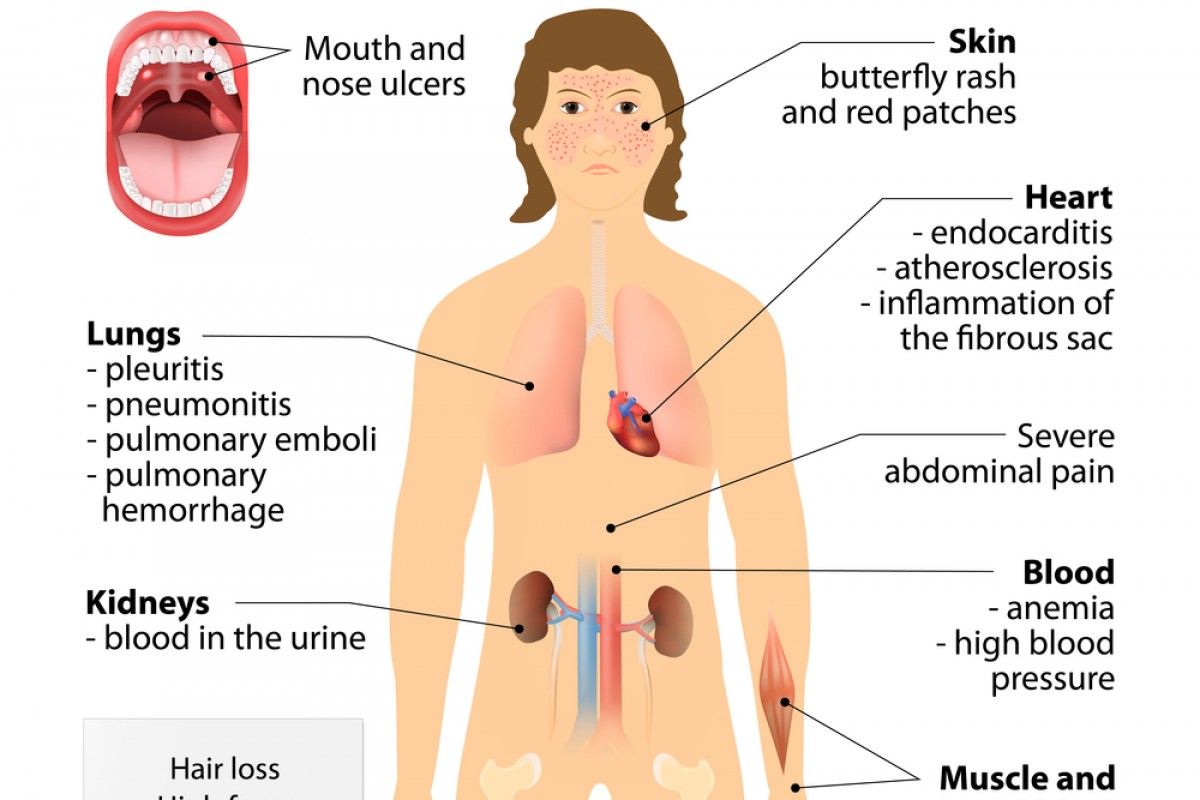
Causes and Transmission of Measles: Understanding the Spread
Measles is caused by a highly contagious virus that spreads through respiratory droplets. How exactly does measles transmission occur?
- Breathing in airborne water droplets from an infected person’s cough or sneeze
- Direct physical contact with an infected individual
- Touching contaminated surfaces and then touching one’s face
The measles virus can survive for up to two hours on surfaces and in the air, making it extremely infectious. It’s estimated that around 90% of unvaccinated people in close proximity to an infected person will contract the virus.
Are you contagious before showing symptoms of measles? Yes, infected individuals are typically contagious from four days before the appearance of the rash until four days after the rash emerges. This extended period of infectiousness contributes to the rapid spread of measles in unvaccinated populations.
Risk Factors for Measles: Who is Most Vulnerable?
While measles has become rare in countries with robust vaccination programs, certain groups remain at higher risk of contracting the disease:

- Unvaccinated individuals, especially children
- People with weakened immune systems
- Unvaccinated pregnant women
- Travelers to areas where measles is still common
- Healthcare workers who may be exposed to infected patients
Why are unvaccinated pregnant women at particular risk? Pregnant women who contract measles face an increased risk of serious complications, including miscarriage and premature labor. This underscores the importance of vaccination and prenatal care.
Diagnosing Measles: Clinical Evaluation and Laboratory Tests
Accurate diagnosis of measles is crucial for proper treatment and prevention of spread. How do healthcare providers diagnose measles?
- Clinical evaluation: Doctors look for characteristic symptoms, particularly the distinctive rash and Koplik’s spots.
- Medical history: Information about potential exposure and vaccination status is gathered.
- Laboratory tests: Blood tests can confirm the presence of measles antibodies or viral RNA.
- Viral culture: In some cases, samples from the nose, throat, or urine may be cultured to isolate the virus.
Early diagnosis is essential for implementing isolation measures and preventing further transmission of the virus. If you suspect you or someone you know may have measles, it’s crucial to seek medical attention promptly while taking precautions to avoid exposing others.
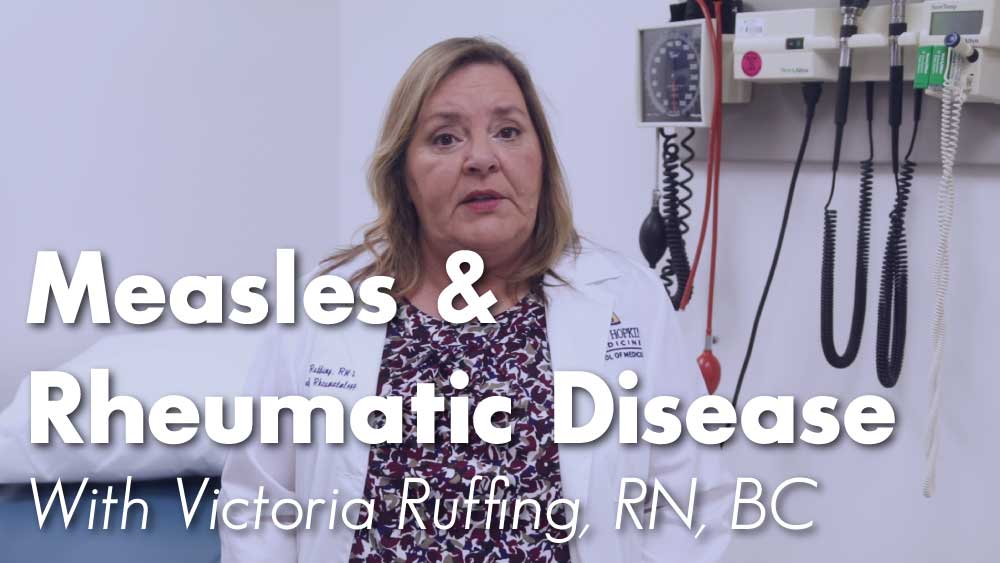
Treatment and Management of Measles: Supportive Care and Complications
There is no specific antiviral treatment for measles, and management primarily focuses on supportive care to alleviate symptoms and prevent complications. What does supportive care for measles typically involve?
- Rest and hydration
- Fever reduction with acetaminophen or ibuprofen
- Vitamin A supplementation, which can help reduce the severity of symptoms and complications, especially in children
- Isolation to prevent spread to others
In most cases, measles symptoms improve within 7-10 days. However, it’s important to monitor for potential complications, which can be severe in some cases.
Potential Complications of Measles
While most people recover fully from measles, serious complications can occur, particularly in certain high-risk groups. What are some potential complications of measles?
- Pneumonia
- Encephalitis (inflammation of the brain)
- Ear infections, which can lead to permanent hearing loss
- Pregnancy complications, including miscarriage and premature birth
- Subacute sclerosing panencephalitis (SSPE), a rare but fatal neurological disease that can develop years after infection
These complications underscore the importance of vaccination and prompt medical attention for suspected measles cases.

Measles Vaccination: A Crucial Tool in Prevention
Vaccination has been instrumental in reducing the global burden of measles. The Measles, Mumps, and Rubella (MMR) vaccine is highly effective in preventing measles infection. How effective is the measles vaccine?
- One dose of MMR vaccine is approximately 93% effective at preventing measles
- Two doses are about 97% effective
The Centers for Disease Control and Prevention (CDC) recommends the following vaccination schedule:
- First dose: 12-15 months of age
- Second dose: 4-6 years of age
Adults who haven’t been vaccinated or don’t have evidence of immunity should also receive the MMR vaccine. This is particularly important for healthcare workers, international travelers, and women planning to become pregnant.
Herd Immunity and Measles Prevention
Achieving high vaccination rates not only protects individuals but also contributes to herd immunity. What is herd immunity, and why is it important for measles prevention?
Herd immunity occurs when a large portion of a population becomes immune to a disease, making the spread of the disease from person to person unlikely. For measles, it’s estimated that 93-95% of the population needs to be immune to achieve herd immunity. This level of immunity helps protect vulnerable individuals who cannot be vaccinated, such as infants and people with certain medical conditions.

Global Perspective: Measles as an Ongoing Public Health Concern
Despite significant progress in measles control through vaccination programs, the disease remains a global health concern. Why is measles still a problem in many parts of the world?
- Inadequate vaccination coverage in some regions
- Vaccine hesitancy and misinformation
- Challenges in healthcare access and delivery in certain areas
- Population movement and migration
The World Health Organization (WHO) reports that measles cases have been increasing in recent years, with outbreaks occurring even in countries where the disease was previously considered eliminated. This trend highlights the importance of maintaining high vaccination rates and continuing global efforts to combat measles.
Measles Elimination and Eradication Efforts
Many countries and regions have set goals for measles elimination, defined as the absence of endemic measles transmission for at least 12 months. What progress has been made towards measles elimination globally?

As of 2020, 81 countries (42%) had achieved or maintained measles elimination. However, the COVID-19 pandemic has disrupted vaccination programs and surveillance efforts, potentially setting back progress in some areas. Continued commitment to vaccination, surveillance, and outbreak response is crucial for achieving and maintaining measles elimination worldwide.
Measles Awareness and Education: Key to Prevention and Control
Raising awareness about measles and promoting accurate information is essential for effective prevention and control. What are some important messages to communicate about measles?
- The importance of vaccination for individual and community protection
- Recognition of measles symptoms and when to seek medical care
- Understanding the potential severity of measles complications
- The role of personal hygiene and isolation in preventing spread
- Dispelling myths and addressing vaccine hesitancy
Healthcare providers, public health officials, and community leaders play crucial roles in educating the public about measles and promoting vaccination. By working together to increase awareness and understanding, we can continue to make progress in controlling this highly contagious disease.
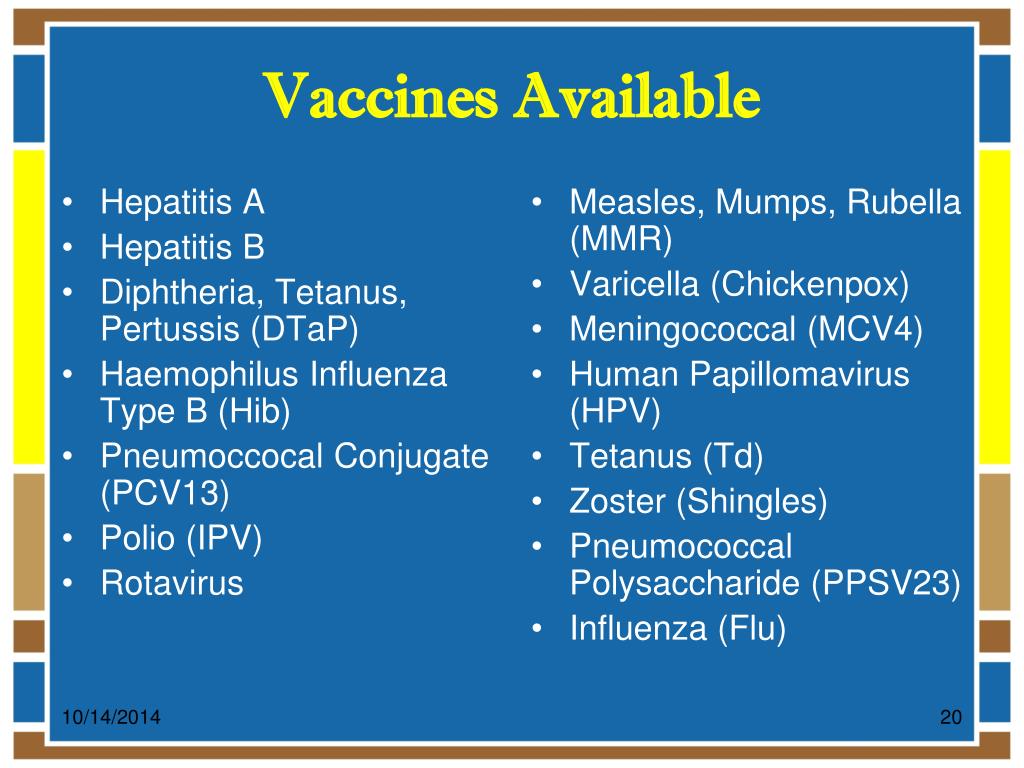
The Role of Technology in Measles Prevention and Control
Advancements in technology are contributing to improved measles prevention and control efforts. How is technology being used to combat measles?
- Digital health records and immunization registries to track vaccination status
- Mobile apps for symptom checking and outbreak alerts
- Telemedicine for remote consultations and follow-up care
- Social media and digital platforms for public health messaging and education
- Geographic Information Systems (GIS) for mapping outbreaks and targeting interventions
These technological tools, combined with traditional public health strategies, are enhancing our ability to prevent, detect, and respond to measles cases and outbreaks more effectively.
In conclusion, understanding the types, symptoms, causes, and risk factors of measles is crucial for effective prevention and control. While vaccination has dramatically reduced the incidence of measles in many parts of the world, ongoing vigilance and efforts are necessary to maintain progress and work towards global elimination. By combining public health strategies, education, and technological innovations, we can continue to make strides in protecting individuals and communities from this highly contagious disease.
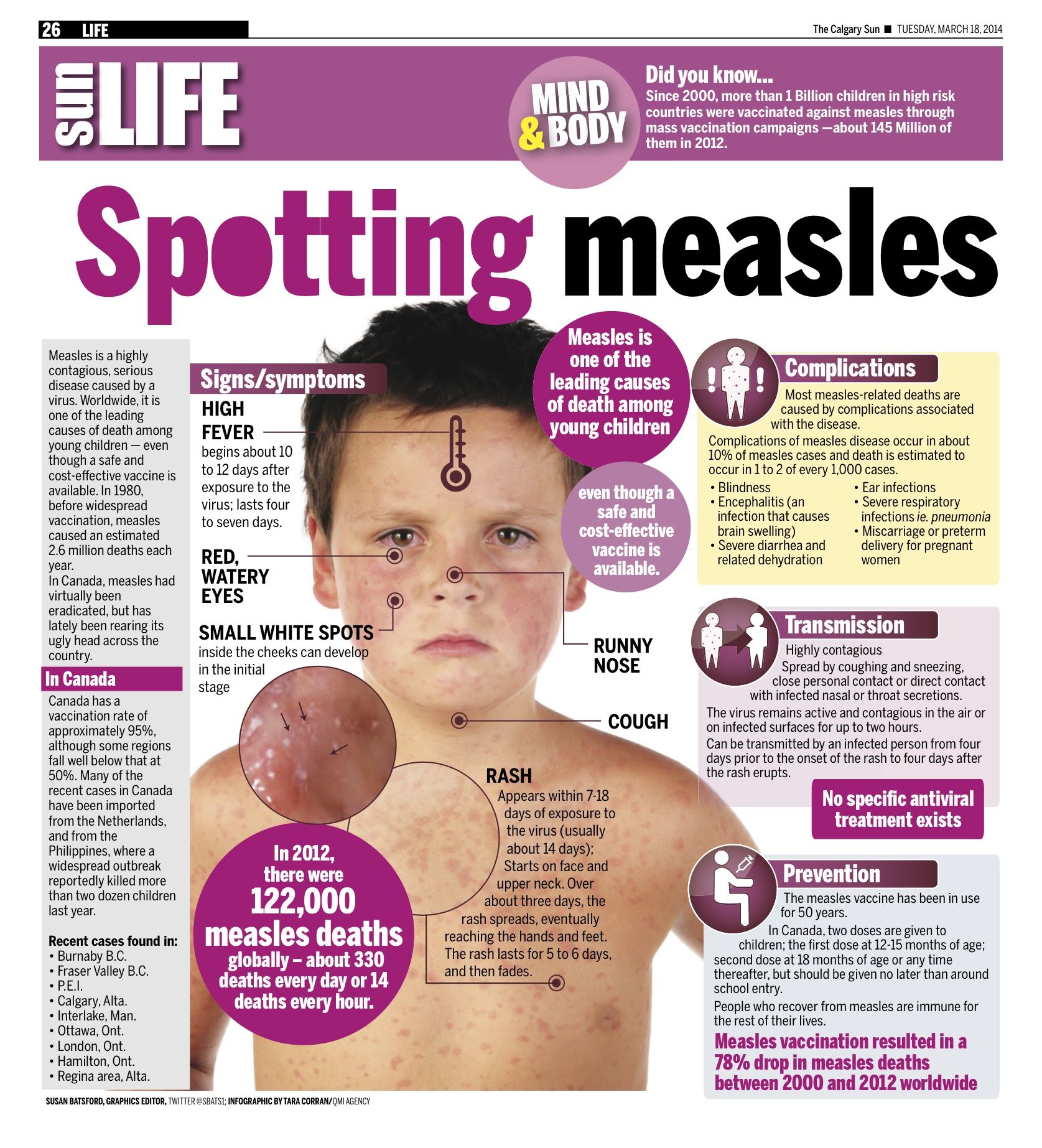
Learn to recognize measles | Ada
What is measles?
Measles is a highly infectious, viral illness. Children are most often affected, although it can occur at any age. Although the illness is unpleasant, most people make a full recovery. However, in certain cases, serious complications can develop.
Vaccination programs have had a huge impact on reducing the number of cases of measles. 1 However, measles is still a common disease in many other countries. 2
The measles virus is contained in water droplets and most often spread through the nose or mouth of an infected person. Physical contact, coughing and sneezing are the most common causes of infection spreading.
People with measles typically experience flu-like symptoms, such as a runny nose and coughing, fever, feeling generally unwell and a gradual rash. The symptoms of measles usually get better within seven to 10 days.
Types of measles
There are two types of measles. Although they share some of the same symptoms, they are caused by different viruses:
- Standard measles, sometimes known as red measles, or hard measles, is caused by the rubeola virus.
- German measles, also known as rubella, is an entirely separate illness caused by the rubella virus and is usually a milder infection than standard measles. 3 For more information, read this resource on rubella.
Symptoms of measles
Once an affected person has caught measles, the virus multiplies in the back of the throat and begins to spread gradually throughout the body.
It can take up to 10 days for an infected person to show symptoms. The most common early symptoms are: 4567
- Cold-like symptoms, such as a runny nose, sneezing and coughing
- A high temperature or fever
- Sore, red eyes
- Sensitivity to light
- Grey-white spots inside the cheeks, mouth and throat
- Nausea
- Tiredness
- Lack of appetite
- Aches and pains
Around three to four days after the first symptoms, a skin rash will normally begin to appear. The rash is perhaps the most noticeable symptom of measles and is recognizable by: 678
The rash is perhaps the most noticeable symptom of measles and is recognizable by: 678
- Red-brown spots, either flat or slightly raised, that may join together to form blotches
- Spots usually start on the head and neck and then gradually spread downwards through the rest of the body
- The rash may turn pale when pressed at first, but will gradually fade and become non-blanching (stays red when pressed)
- Slight itching
Generally, the rash takes two to three days to cover the body and then another few days to fade, beginning on the head and disappearing in the same order in which it appeared. As other symptoms begin earlier, affected people usually feel most unwell on the first or second day that the rash is present.
Symptoms of measles usually begin to appear on average around seven to 14 days after becoming infected. 6 However, affected people are usually infectious four days before to four days after the measles rash appears. 4
4
Overall, most people with measles feel better within seven to 10 days of first experiencing symptoms. On occasion, a dry cough may persist after all other symptoms have gone. 8 Check your symptoms with the Ada app.
During the measles infection, the immune system builds up a resistance to the virus. It is therefore highly unlikely for anyone to have measles more than once in their lifetime. 8
Causes of measles
Measles is caused by a viral infection, and is highly contagious. It is estimated that around 90 percent of unvaccinated people close to someone who is in the contagious phase of measles will also become infected. 9
Measles is transmitted in a similar way to colds and flu, i.e. breathing in the airborne water droplets coughed or sneezed out by an infected person. Although physical contact, coughing and sneezing are the most common causes of infection spreading, it is also possible to contract measles simply by breathing in contaminated air, or touching a contaminated surface and then breathing in the droplets.
The measles virus can live for up to two hours on surfaces and in an airspace. 9
Risk factors
Measles is very rare in countries that have a vaccination program. In recent decades, the number of measles cases in the United States has significantly declined due to the introduction of the Measles, Mumps and Rubella (MMR) vaccine. However the disease has not been completely eradicated. In 2017 there were 120 reported cases of measles in the United States according to the Centers for Disease Control and Prevention (CDC). The majority of these cases were in people who were unvaccinated. 10
Unvaccinated people are at most risk of contracting measles, in particular people with a weakened immune system. Unvaccinated pregnant women should also be especially cautious. Pregnant women with measles may develop serious complications that can result in miscarriage or premature labor. 7 See more below.
Diagnosing measles
A doctor will usually look for a combination of characteristic symptoms such as a skin rash, fever and cough to diagnose measles.
However, a blood or saliva test is the only way to definitively confirm the diagnosis. 11 These tests check for Immunoglobulin M and Immunoglobulin G antibody levels, both of which may indicate the current or past presence of measles. 12
If measles is suspected, it is important to call the surgery and tell the staff when making a doctor’s appointment. Because measles is very contagious, it is common for medical professionals to ask initial questions over the phone to help them decide how likely the diagnosis of measles is, and whether a trip to the surgery can be avoided. If an appointment with a doctor is necessary, the doctor may make special arrangements, such as a home visit, in order to reduce the risk of infecting other patients. 13
If you are worried that you or someone you know may have measles, You can start a free symptom assessment with the Ada app at any time.
Treatment of measles
There is no specific medicine used to treat measles. Because the disease is viral and not bacterial, antibiotics are not effective.
Treatment for measles instead aims to manage and ease the symptoms until the body’s natural immune system can clear the infection. Symptoms usually improve within seven to 10 days. Typical treatment recommendations include: 81415
- Plenty of bed rest to help boost the immune system
- Drinking lots of fluids such as water, fruit juices and herbal teas, to prevent dehydration and help ease a sore throat; alcohol and caffeine should be avoided
- Closing curtains and dimming lights to control sensitivity to light
- A humidifier or sitting in a steamy bathroom to help ease a cough or sore throat
- Ibuprofen and paracetamol/acetaminophen may be recommended to relieve fever and aches
- Vitamin A supplements may be recommended to people suffering from measles, particularly children, in order to lessen the severity of the condition and the risk of complications 16
Please note that ingesting a high amount of vitamin A can result in a condition called hypervitaminosis A, or vitamin A toxicity. This is usually the result of a person taking high-dose dietary supplements, so always discuss vitamin A supplementation with a doctor before starting. 17
This is usually the result of a person taking high-dose dietary supplements, so always discuss vitamin A supplementation with a doctor before starting. 17
Prevention of measles
The best precaution against measles is to be vaccinated against it.
Vaccinations
The most common vaccine is the MMR vaccine, which immunizes against measles, mumps and rubella. According to CDC, two doses of the MMR vaccine are about 97 percent effective at preventing measles, and a single dose is about 93 percent effective. 1
In countries with a vaccination program, the MMR vaccine is first administered to children around 12-15 months, with a second, booster dose when they are between four to six years old. 1 For babies travelling to countries with a high rate of measles infection, the first dose of the vaccine may be given as early as six months old. 18
Adults can request the measles vaccine from their doctors if they have never been immunized.
There is a further vaccine called MMRV, which protects against measles, mumps, rubella and varicella (chickenpox). Currently this vaccine is only licensed for use in children aged between 12 months and 12 years old. 1
Travelling and the risk of measles
The measles virus remains common in many countries in the world, particularly in parts of Africa and Asia. 2 Measles outbreaks in the United States most often occur when returning travellers spread the disease to other unvaccinated people, having contracted the illness in another country. 19
It is best to take precautions to reduce the risk of contracting and spreading the measles virus when travelling internationally. The most important of these is to receive the MMR vaccination prior to travelling. Children can receive their first dose at six months old when travelling internationally. Other ways to help prevent illness include: 20
- Wash hands frequently, ideally with soap and water, or alternatively hand sanitizer
- Cover the mouth and nose with a tissue, not the hands, when coughing and sneezing
- Avoid contact with people who are sick, especially close contact such as kissing, hugging and sharing cooking or eating utensils
- Do not touch the eyes, nose or mouth unless hands are fully clean
Good to know: Always contact a doctor when feeling seriously unwell.
Side-effects of the MMR vaccine
The benefits of the MMR vaccine outweigh the risks, but side effects are possible. These commonly include: 21
- Aching, sore arm from the shot
- Short term, mild rash
- Temporary stiffness in the joints. Most commonly affects teenage and adult women
- Fever
Less common side effects include: 21
- Fits caused by fever, such as febrile seizures. These are rare and are not a sign of any long-term health problems
- A temporary low platelet count which affects the blood’s ability to clot. Again this is rare and usually goes away without treatment or any long-term issues
- Swelling of the glands in the cheeks, neck or jaw for a couple of days
In very rare cases, a person may have a serious allergic reaction after a dose of the MMR vaccine. For this reason, anyone who has had an allergic reaction to any component of the vaccine may be advised not be vaccinated. 22 If there are any concerns about the MMR vaccine and allergies, it is important to discuss these with a doctor.
22 If there are any concerns about the MMR vaccine and allergies, it is important to discuss these with a doctor.
Despite concerns that the MMR vaccine may cause autistic spectrum disorders, multiple studies have shown there is no link between being vaccinated and developing autism. 23
Isolation
Due to how contagious the measles virus is, it is important to limit the risk of spreading the infection to others. Symptoms of measles usually begin to appear on average around seven to 14 days after first becoming infected. 6 However, affected people are usually infectious four days before to four days after the measles rash appears. 4
For this reason, people with this condition should stay home from the moment symptoms begin to appear until four days after the rash disappears. 9
Friends, family, co-workers, classmates, carers and teachers should be notified if they may have come into contact with someone who has measles during the infectious period.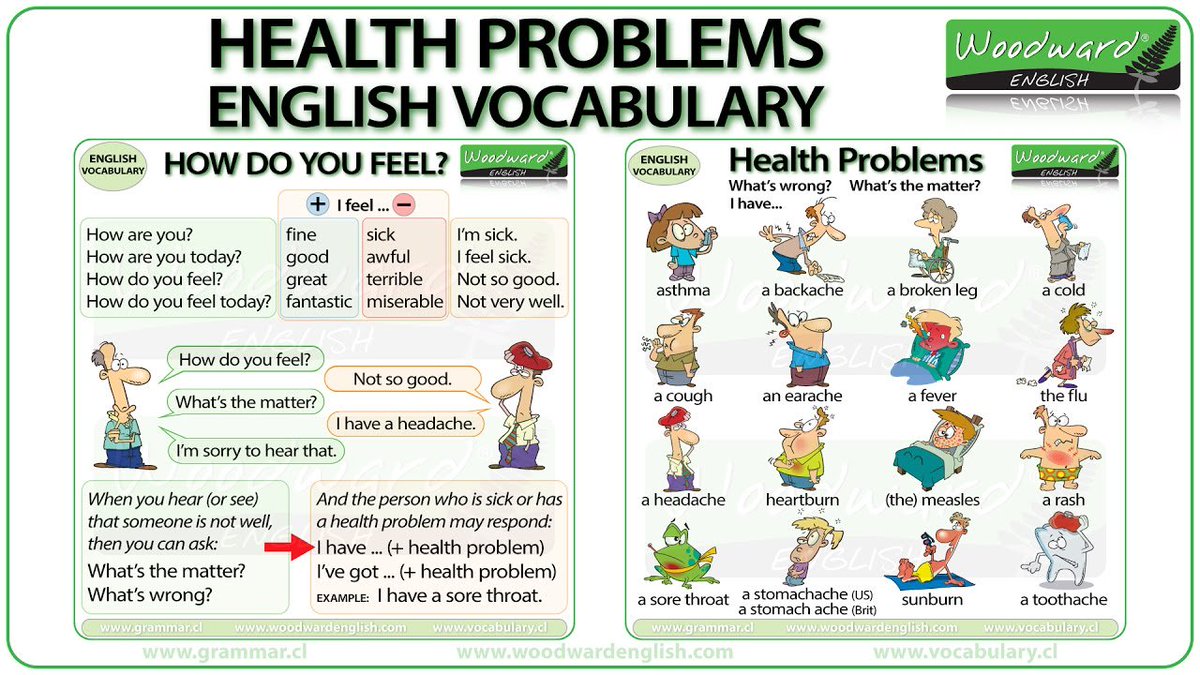 This is particularly important if they are a vulnerable person.
This is particularly important if they are a vulnerable person.
Contact with vulnerable people such as young children, pregnant women and those with weakened immune systems should be especially limited.
Complications of measles
In the majority of cases, people with the measles virus make a full recovery after around seven to 10 days and will experience no further complications. However serious complications which can be life-threatening do occur.
Measles complications can happen at any age, but are more likely to occur in certain groups of people, such as: 811
- Children younger than five years old
- Children who have a poor diet or are malnourished
- Children with a weakened immune system, such as those with leukaemia or HIV
- Adults older than 20 years of age
- Pregnant women
Common complications
There are a number of common complications that may arise from measles, such as: 242526
- Vomiting and diarrhoea, which can lead to dehydration
- Eye infection, conjunctivitis
- Ear infection, otitis media, which can lead to earache
- Inflammation of the voice box, laryngitis
While these symptoms can be distressing, they are not usually serious. However, affected people should see a doctor if they are concerned.
However, affected people should see a doctor if they are concerned.
Uncommon complications
More uncommon complications from measles may include: 242526
- A squint, if the measles virus affects the nerves or muscles of the eye
- Fits caused by fever, such as febrile seizures
- Inflammation of the liver, known as hepatitis
- Infection of the airways and lungs, such as pneumonia, bronchitis or croup, which can be very serious
Rare complications
In rare cases, measles can lead to: 27282930
- Serious eye disorders such as infection of the optic nerve, which can lead to blindness
- Infection of the membranes around the brain and spinal cord, such as viral meningitis
- Inflammation of the brain, or encephalitis, affects roughly 1-3 out of every 1,000 cases
- Central nervous system disease known as subacute sclerosing panencephalitis (SSPE) which can develop several years after contracting measles.
 This disease can be fatal but is extremely rare, occurring in roughly two per 100,000 cases
This disease can be fatal but is extremely rare, occurring in roughly two per 100,000 cases
If any concerning symptoms develop, always contact a doctor.
Measles and pregnancy
Pregnant women who contract measles have an increased risk of developing serious complications which can lead to miscarriage, stillbirth or premature labor. 31
The CDC guidelines recommend that the MMR vaccine be administered to unvaccinated women no less than a month before becoming pregnant. 32 The MMR vaccine not only protects against measles, but also against mumps and rubella. Rubella can also cause severe problems during pregnancy, including birth defects, miscarriage and stillbirth. 21
Good to know: Women who are planning a pregnancy should discuss vaccination options with their doctor.
Measles FAQs
Q: Are measles and German measles the same?
A: No. Measles, also known as rubeola, and German measles, also known as rubella, are two completely separate illnesses. They do have certain symptoms in common, including:
Measles, also known as rubeola, and German measles, also known as rubella, are two completely separate illnesses. They do have certain symptoms in common, including:
- Cold-like symptoms such as a runny nose, sneezing and coughing
- A high temperature or fever
- Sore, red eyes
- A skin rash
They are also both spread in the airborne water droplets coughed or sneezed out by an infected person, as well as prevented by the MMR vaccine. However, they are caused by different viruses and have different specific symptoms, complications and treatments.
Q: What does the measles rash look like?
A: The measles rash is characterized by red-brown spots that may join together to form blotches. It is usual for spots to first appear on the head and then gradually spread down throughout the body. For some people the rash will be slightly itchy, but this is not always the case. Generally the rash takes around two to three days to cover the body and then another few days to fade in order of appearance.
Q: Is there a vaccine against measles?
A: Yes. The MMR vaccine protects against measles, mumps and rubella, and two doses of the vaccine have been shown to be around 97 percent effective at preventing measles. Children aged between 12 months and 12 years old may also get the MMRV vaccine, which immunizes against measles, mumps, rubella and varicella (chickenpox).
Q: What is the treatment for measles?
A: Because there is no medication that targets the measles virus, most treatment focuses on managing and easing the symptoms of measles.
Q: What precautions can be taken against measles?
A: The only way to prevent measles is by having a vaccination. Measles is very contagious, so it is important for people with this condition to stay home from the moment symptoms begin to appear to four days after the rash disappears.
Other useful preventative methods include:
- Washing hands frequently, ideally with soap and water or hand sanitizer
- Covering the mouth and nose with a tissue when coughing and sneezing
- Avoiding close contact with people who are sick
- Avoid touching the eyes, nose or mouth unless hands are fully clean
Share this article:
Centers for Disease Control and Prevention. “Measles Vaccination.”. 5 February 2018. Accessed 17 September 2018.
World Health Organisation. “Measles and Rubella Surveillance Data.”. 17 September 2018. Accessed 17 September 2018.
eMedicineHealth. “Measles.”. 17 August 2018. Accessed 17 September 2018.
Patient Info. “Measles.”. 3 February 2015. Accessed 17 September 2018.
Medline Plus. “Measles.”. 15 August 2016. Accessed 17 September 2018.
Centers for Disease Control and Prevention. “Measles: Signs and Symptoms.”. 5 February 2018.
 Accessed 17 September 2018.
Accessed 17 September 2018.World Health Organisation. “Measles.”. 19 February 2018. Accessed 17 September 2018.
Patient Info. “Measles.”. 9 March 2018. Accessed 17 September 2018.
Centers for Disease Control and Prevention. “Transmission of Measles.”. 5 February 2018. Accessed 17 September 2018.
Centers for Disease Control and Prevention. “Measles Cases and Outbreaks.”. 23 October 2018. Accessed 25 October 2018.
Centers for Disease Control and Prevention. “Measles (Rubeola): For Healthcare Professionals.”. 5 February 2018. Accessed 17 September 2018.
Mayo Clinic. “Measles (Rubeola) Virus Antibody, IgM and IgG (Separate Determinations), Serum.”. Accessed 17 September 2018.
Centers for Disease Control and Prevention. “Frequently Asked Questions about Rubeola in the U.S.”. 5 February 2018. Accessed 17 September 2018.
Mayo Clinic. “Diagnosis and Treatment.”. 7 September 2018.
 Accessed 17 September 2018.
Accessed 17 September 2018.eMedicineHealth. “What Is the Treatment for Measles?”. 17 August 2018. Accessed 17 September 2018.
National Center for Biotechnology information. “Vitamin A for treating measles in children.”. 19 October 2005. Accessed 17 September 2018.
Office of Dietary Supplements. “Can vitamin A be harmful?”. 5 June 2013. Accessed 19 September 2018.
World Health Organisation. “International Travel and Health: Measles.”. Accessed 17 September 2018.
Centers for Disease Control and Prevention. “Measles (Rubeola): For Travelers.”. 5 February 2018. Accessed 17 September 2018.
Centers for Disease Control and Prevention. “Travelers’ Health: Measles.”. 11 May 2018. Accessed 17 September 2018.
Centers for Disease Control and Prevention. “Measles, Mumps, and Rubella (MMR) Vaccine Safety.”. 27 October 2015. Accessed 17 September 2018.
Centers for Disease Control and Prevention.
 “MMR (Measles, Mumps & Rubella) Vaccine Information Statement.”. 11 July 2018. Accessed 17 September 2018.
“MMR (Measles, Mumps & Rubella) Vaccine Information Statement.”. 11 July 2018. Accessed 17 September 2018.Centers for Disease Control and Prevention. “Vaccines Do Not Cause Autism.”. 27 October 2015. Accessed 17 September 2018.
Centers for Disease Control and Prevention. “Complications of Measles.”. 5 February 2018. Accessed 17 September 2018.
Mayo Clinic. “Symptoms and Causes.”. 7 September 2018. Accessed 17 September 2018.
Patient Info. “What are the possible complications of measles?”. 9 March 2018. Accessed 17 September 2018.
World Health Organisation. ”The child, measles and the eye.”. 2004. Accessed 17 September 2018.
Meningitis Research Foundation. “What causes viral meningitis?”. Accessed 17 September 2018.
Encephalitis Society. “Measles infection and encephalitis.”. Accessed 17 September 2018.
Encephalitis Society. “Subacute sclerosing pan-encephalitis (SSPE).
 ”. February 2017. Accessed 17 September 2018.
”. February 2017. Accessed 17 September 2018.National Center for Biotechnology information. “Measles, Mumps, and Rubella.”. June 2012. Accessed 17 September 2018.
Centers for Disease Control and Prevention. “Maternal Vaccines: Part of a Healthy Pregnancy.”. 5 August 2016. Accessed 17 September 2018.
Measles
Measles virus is an enveloped, ribonucleic acid virus of the genus Morbillivirus. Although at least 20 different genotypes have been isolated in various parts of the world, there is only one serotype. Measles is highly contagious, and an infected person will often transmit the virus to over 90% of unprotected close contacts.
Following inhalation of virus-containing droplets, measles virus replicates in the cells of the nose and throat, and 5-7 days after exposure infection is spread through the blood to the skin, the eye, and the respiratory tract. Patients develop high fever, cold-like symptoms, and conjunctivitis. A typical rash appears after another 3-4 days, spreading from the face and neck to the trunk and extremities. While most persons recover from measles without lasting effects, severe forms of the disease with bleeding from skin and mucosa may occur. Among children less than 5 years of age measles complications frequently include otitis media and pneumonia. Persons with malnutrition, especially vitamin A deficiency, or with severe immunological disorders such as advanced HIV infection are at increased risk of developing severe or even fatal measles.
While most persons recover from measles without lasting effects, severe forms of the disease with bleeding from skin and mucosa may occur. Among children less than 5 years of age measles complications frequently include otitis media and pneumonia. Persons with malnutrition, especially vitamin A deficiency, or with severe immunological disorders such as advanced HIV infection are at increased risk of developing severe or even fatal measles.
Measles vaccines
The envelope of measles virus contains haemagglutinin that is responsible for the binding of the virus to the host cell surface and a fusion protein that facilitates viral uptake into the cell. Antibodies to haemagglutinin correlate with protection against the disease. A number of live, attenuated measles vaccines are available, either as monovalent vaccine or in combination with either rubella vaccine (MR) or mumps and rubella vaccines (MMR). Many of the attenuated strains in use are derived from the Edmonston strain isolated in 1954, including the Schwartz, the Edmonston-Zagreb, and the Moraten strains.
Other strains which are not derived from Edmonston strain include the CAM-70, TD 97, Leningrad-16, and Shanghai 191 (Ji-191) strains. Typically, the attenuated production virus is replicated in primary chick embryo or cell cultures, the virus harvested, clarified, and (alone, or with other antigens) lyophilized. The vaccine is reconstituted and generally injected subcutaneously, although intramuscular administration has also been shown to be effective. Measles vaccines have had a dramatic impact on measles morbidity and mortality, and programs for regional elimination of measles through high vaccine coverage of all children continue to reduce the number of cases.
Measles Vaccine Standardization
Written Standards
WHO first published the requirements for the production and quality control of inactivated and live measles vaccines in 1966. This document was revised in 1988 following the discontinuation of use of the inactivated vaccine and the increased use of eggs from closed colonies as well as cell cultures. As measles vaccines are routinely used in multi-antigen combinations with mumps and rubella vaccines, WHO updated the guidance for the three vaccines in 1992 into a single document which contains the requirements for the three monovalent vaccines and MMR.
As measles vaccines are routinely used in multi-antigen combinations with mumps and rubella vaccines, WHO updated the guidance for the three vaccines in 1992 into a single document which contains the requirements for the three monovalent vaccines and MMR.
Requirements for measles, mumps and rubella vaccines and combined vaccine (live), Technical Report Series No. 840, 1994, Annex 3
Reference materials
A WHO reference material for live attenuated measles vaccine is available to qualified applicants.
International Reference Preparations Catalogue
symptoms, causes, diagnosis, treatment and prevention
Pediatrician of the highest category
Morozova
Ekaterina Vyacheslavovna
Experience 19 years
Candidate of Medical Sciences. Member of the Union of Pediatricians of Russia. Annually takes part in international congresses of pediatricians. She was awarded a certificate of gratitude and an honorary diploma from the Moscow Department of Health for conscientious and many years of work in the metropolitan healthcare system.
Make an appointment
Measles is a highly contagious viral infectious disease, after which a person develops strong immunity. The infection is most common in children aged 2-5 years. Measles is rare in adults. Most often it occurs in people who have not received vaccinations.
The causative agent of the disease is a specific measles virus. Re-infection with them does not occur due to the development of persistent immunity. In this regard, a person may encounter the symptoms and treatment of measles only once. Most often, the disease resolves within 1-2 weeks without any immunological disorders.
Symptoms and signs of measles
The measles virus develops in the human body in several stages. First comes the incubation period, which on average lasts about 7-14 days, in rare cases – 21 days. During this period, the symptoms of measles do not yet occur. They appear already at the next stage – catarrhal. At this stage, measles in adults causes the following clinical signs:
- general weakness and body aches;
- coryza with profuse discharge;
- temperature 38-40°C;
- severe headache;
- agonizing dry cough;
- sore throat when swallowing;
- inflammation of the mucous membrane of the eyes;
- sore throat when swallowing.

The catarrhal stage takes an average of 5 days. After it, the symptoms of measles begin to decrease somewhat, and the patient feels relieved. But after about a day, the symptoms increase again and the state of health worsens. The next stage is coming – the period of rashes. They represent a maculopapular rash – individual elements merge into single foci.
Spots first appear on the neck, head, upper chest, and then spread throughout the body. 3 days after the onset, the rash begins to turn pale – a recovery period begins, when the temperature and general well-being return to normal.
Causes and routes of infection
Measles is caused by an RNA virus. It is transmitted from a sick person by airborne droplets – after contact with the mucous membranes of the respiratory tract, the pathogen enters the bloodstream and spreads throughout the body. The patient is especially dangerous in the first days of infection.
Measles can be caught not only through direct contact with a sick person. Infection can occur even if you just go into the room where the patient has recently been. It is considered harmless only from the 5th day after the appearance of rashes.
Infection can occur even if you just go into the room where the patient has recently been. It is considered harmless only from the 5th day after the appearance of rashes.
Complications
In especially severe cases or if treatment is not started in time, measles can be complicated by a secondary bacterial infection – pneumonia. In adulthood, it can also contribute to the development of the following pathologies:
- meningitis;
- meningoencephalitis;
- polyneuritis;
- corneal ulcers, keratitis;
- hearing loss;
- lesions of intra-abdominal lymph nodes.
The most rare and dangerous complication is measles encephalitis, which causes inflammation of the brain. That is why timely measles vaccination for adults is very important. In childhood, the disease is more easily tolerated, and in adulthood it can cause severe complications.
When to see a doctor
Going to the clinic for measles is essential, as there are serious risks of complications in adulthood. The doctor should be visited as early as possible, immediately after the first signs of the disease appear. By recognizing the symptoms of measles, a specialist can prescribe the appropriate treatment.
The doctor should be visited as early as possible, immediately after the first signs of the disease appear. By recognizing the symptoms of measles, a specialist can prescribe the appropriate treatment.
In JSC “Medicina” (clinic of Academician Roitberg) in the center of Moscow, if you suspect measles, you can contact a general practitioner or an infectious disease specialist. They also decide whether measles vaccination is necessary.
Diagnosis of measles
Test for measles at an early stage of the disease to detect immunoglobulins M (IgM). These are early antibodies that indicate the initial stage of the disease and indicate that the body has already begun to fight the virus.
Analysis for measles shows an increase in IgM titer of at least 4 times. The first time it is prescribed when characteristic signs of the disease appear, and the second time after 2-3 weeks to confirm infection with a similar infection. Other procedures for the diagnosis of measles, carried out at JSC “Medicine” (clinic of academician Roitberg), include:
- serological blood test;
- urinalysis;
- chest x-ray for complications.

Treatment
Measles can be treated on an outpatient basis if the patient does not have serious complications of the disease. Hospitalization is necessary in case of a general serious condition of the patient or the impossibility of isolation, for example, when living in a hostel, military unit, etc. Measles treatment is exclusively symptomatic, i.e. the patient is prescribed drugs that facilitate the course of the disease:
- antipyretics;
- antiviral;
- vasoconstrictor from the common cold.
In the event of a bacterial infection (otitis or pneumonia), the patient is prescribed antibacterial drugs. Sufficient efficiency in this case have pills taken orally. Antibiotics are prescribed on the basis of an analysis to identify the causative agent of the infection in order to determine its sensitivity to specific drugs.
Measles vaccination
Measles vaccination for adults is prescribed for children under 35 years of age. Vaccination is mandatory regardless of age for people working with children. In general, vaccination is necessary because in adulthood there is a risk of serious complications, and also because of the severe course of the infection.
Vaccination is mandatory regardless of age for people working with children. In general, vaccination is necessary because in adulthood there is a risk of serious complications, and also because of the severe course of the infection.
The measles vaccine is believed to provide immunity for an average of 20 years. Vaccination is done twice with an interval of 3 months. The modern measles vaccine has a one-, two- or three-component composition, i.e. it is made for one or more diseases: measles, measles-mumps, measles-mumps-rubella.
Home remedies
Home treatment for measles is to keep patients in bed for the entire febrile period. Doctors advise avoiding bright light, adhere to the rules of oral and eye hygiene. The room where the patient is located should be regularly ventilated and wet cleaned twice a day. The patient needs a light diet that does not irritate the intestines. Vitamins A and C must be included in the diet.
Myths and dangerous misconceptions in the treatment of measles
There are many myths and misconceptions around measles, which in some cases lead to serious consequences. Among the most common myths are the following.
Among the most common myths are the following.
- Nobody has had measles for a long time. According to statistics, quite the opposite. Outbreaks of the disease still occur in areas with a low level of medical development. Developed countries are not immune from this either.
- Only children get measles. Yes, 95% of patients are children under the age of 16, but there is no guarantee that an adult will not get measles.
- It’s better to get sick. Many parents believe that it is better for a child to have measles and become immune to it than to be vaccinated, considering the infection to be a harmless childhood disease like chickenpox. In reality, it’s not like that at all. According to WHO, measles is one of the leading causes of death among young children.
- Vaccination does not work. This is also a misconception, as confirmed by WHO data. In 2000-2015 mass vaccination was able to reduce the number of cases worldwide by 75%.
Prophylaxis
There is no specific prophylaxis against measles. Even the most careful hygiene does not guarantee protection against infection. The measles virus is highly contagious, spreads easily from person to person, and persists in the air for up to 2 hours. The most effective method of prevention is only timely vaccination.
Even the most careful hygiene does not guarantee protection against infection. The measles virus is highly contagious, spreads easily from person to person, and persists in the air for up to 2 hours. The most effective method of prevention is only timely vaccination.
How to make an appointment with a general practitioner or infectious disease specialist
To make an appointment with a specialist, you can fill out an online form on the website, where you will be asked to choose a doctor and an appointment time. Another way is to call our clinic in the center of Moscow at +7 (495) 775-73-60. We have several experienced specialists in our staff, so we work even on weekends and holidays. JSC “Medicina” (clinic of Academician Roitberg) is located in the center of Moscow, not far from the metro stations Mayakovskaya, Chekhovskaya, Novoslobodskaya, Tverskaya and Belorusskaya.
To suffer is not childish. Everything you need to know about measles
Suffering is not childish. Everything you need to know about measles
Everything you need to know about measles
In 28 countries of Europe and throughout the American continent from Canada to Mexico, there is an unfavorable measles epidemiological situation. In Europe, the incidence increased by 4 times over the year. And in our neighboring Ukraine – dozens of times! In the first half of 2018 alone, more than 20,000 cases were registered there, and 11 people died from complications.
There are many misconceptions about this infection.
No. 1. To protect yourself from measles, it is enough to wash your hands and avoid those who are sneezing, coughing, and even more so covered with a rash .
Actually . A person with measles is dangerous to others long before the onset of symptoms of the disease. In the last days of the incubation period, when the patient is actively releasing the virus into the atmosphere, he has no symptoms. Accordingly, it is almost impossible to detect measles at this stage. Yes, and in the first few days of the disease, measles proceeds like a common cold: fever, cough, runny nose, sometimes conjunctivitis. The rash appears only on the 5th or 6th day of the disease, and by this time everyone around who did not have vaccinations must have already become infected.
Yes, and in the first few days of the disease, measles proceeds like a common cold: fever, cough, runny nose, sometimes conjunctivitis. The rash appears only on the 5th or 6th day of the disease, and by this time everyone around who did not have vaccinations must have already become infected.
Nevertheless, even at this time there is still a chance to protect oneself from the disease. To do this, people who come into contact with the sick person need to administer a live measles vaccine or ready-made intravenous immunoglobulin containing donor antibodies within 2-3 days. This drug is obtained from the blood serum of people who have had measles. Its action will last for 2-3 months, and then to protect against measles, you need to be vaccinated.
No. 2. It is not necessary to vaccinate children against measles. First, vaccinated people get sick too. And secondly, it’s better to get this infection easily in childhood than to get sick much harder as adults.
Actually . Yes, vaccinated people get measles. But extremely rare. In practice, this happens only in two cases: either if there was a very high concentration of the virus in the atmosphere, or if the vaccinated person had poorly developed immunity. This happens if there are any disturbances in the functioning of the immune system or if the vaccination was carried out incorrectly. For example, the drug was expired or stored in violation of the temperature regime (therefore, it is important to vaccinate in a safe place), and also if the frequency of vaccine administration was not observed. By the way, children are vaccinated against measles twice: at 1 year and at 6 years (although those born before 2000 were previously vaccinated once).
Yes, vaccinated people get measles. But extremely rare. In practice, this happens only in two cases: either if there was a very high concentration of the virus in the atmosphere, or if the vaccinated person had poorly developed immunity. This happens if there are any disturbances in the functioning of the immune system or if the vaccination was carried out incorrectly. For example, the drug was expired or stored in violation of the temperature regime (therefore, it is important to vaccinate in a safe place), and also if the frequency of vaccine administration was not observed. By the way, children are vaccinated against measles twice: at 1 year and at 6 years (although those born before 2000 were previously vaccinated once).
Adults, and especially the elderly, tend to tolerate measles worse than children. But still, it is not worth infecting a child with measles for the sake of developing natural lifelong immunity. After all, it is difficult to predict how the disease will proceed in a particular case. Often the infection is accompanied by high fever, photophobia, pain, intoxication and other symptoms. But the main danger of measles is the risk of formidable complications, including: encephalitis, meningitis, pneumonia. It is from them, and not from measles itself, that people die. So is it worth playing Russian roulette with the disease?
Often the infection is accompanied by high fever, photophobia, pain, intoxication and other symptoms. But the main danger of measles is the risk of formidable complications, including: encephalitis, meningitis, pneumonia. It is from them, and not from measles itself, that people die. So is it worth playing Russian roulette with the disease?
There is another important reason to get vaccinated against measles. Especially girls and women. After all, the vaccine helps protect not only themselves, but also their future children from the disease. According to our National Calendar, we vaccinate one-year-olds against measles, while the disease is most dangerous for infants. A good way to protect your baby is to feed him breast milk, which contains maternal antibodies to this infection.
No. 3. The vaccine causes autism and other disorders in children. In addition, it can provoke measles. But having naturally recovered from this infection, you can strengthen your immune system and become immune to allergies, asthma, eczema, and even the development of tumors.
Actually . The vaccine contains a live but weakened measles virus. Its introduction leads to the production of antibodies that will protect against the disease, and not provoke its development. Post-vaccination complications are extremely rare. Usually there is only a fever, weakness, a slight rash.
With regard to autism and other diseases, there is not a single scientific study that could confirm these conjectures. As well as there are no objective data on the protective role of measles. But there is harm from such myths. And quite objective. It is anti-vaccination sentiments, widespread in Europe and in our country, that can explain the recent increase in the incidence of measles and other dangerous infections in the world.
No. 4. Measles is extremely difficult to distinguish from other diseases such as scarlet fever.
Actually . Measles that has a typical course are fairly easy to identify. To do this, you do not have to wait for the appearance of a rash on the body, which occurs only on the 5-6th day of the disease. It is necessary to look into the patient’s mouth – on the inner surface of the cheeks there should be gray-white spots with a scarlet border (Belsky-Filatov-Koplik spots). After their disappearance, a rash appears on the body. It always goes from top to bottom: it starts from the head, after 2-3 days it goes down to the body, and then after another 2-3 days – to the legs.
To do this, you do not have to wait for the appearance of a rash on the body, which occurs only on the 5-6th day of the disease. It is necessary to look into the patient’s mouth – on the inner surface of the cheeks there should be gray-white spots with a scarlet border (Belsky-Filatov-Koplik spots). After their disappearance, a rash appears on the body. It always goes from top to bottom: it starts from the head, after 2-3 days it goes down to the body, and then after another 2-3 days – to the legs.
No. 5. At the first sign of measles, antivirals and antibiotics should be taken as soon as possible.
Actually . Measles is a viral disease, so taking antibiotics in this case is not only pointless, but also harmful (an extra blow to a weakened body). There is no specific treatment for measles, the fight should only be with the symptoms: fever, cough, conjunctivitis and others. Antibiotics are needed only if a bacterial infection has joined.
No. 6. Adults and children who are deficient in vitamin A are much more susceptible to measles than those who are deficient.
Actually . Measles is highly contagious. The virus is transmitted by airborne droplets. And if there is a sick person nearby, then the chance of getting infected for an unvaccinated person is almost 100%, no matter if he drinks vitamins or not. But taking vitamin A is useful for the sick. The administration of high doses of this substance (200,000 international units) in the first days of measles significantly reduces the severity of the disease and the risk of complications.
Important!
Routine free measles vaccination is provided :
- Children twice – at the age of 12 months. and at 6 years old.
- Adolescents aged 15–17 years and adults under 35 years old: previously unvaccinated and not sick with measles – twice with an interval of at least 3 months between vaccinations.


 This disease can be fatal but is extremely rare, occurring in roughly two per 100,000 cases
This disease can be fatal but is extremely rare, occurring in roughly two per 100,000 cases Accessed 17 September 2018.
Accessed 17 September 2018. Accessed 17 September 2018.
Accessed 17 September 2018. “MMR (Measles, Mumps & Rubella) Vaccine Information Statement.”. 11 July 2018. Accessed 17 September 2018.
“MMR (Measles, Mumps & Rubella) Vaccine Information Statement.”. 11 July 2018. Accessed 17 September 2018. ”. February 2017. Accessed 17 September 2018.
”. February 2017. Accessed 17 September 2018.

